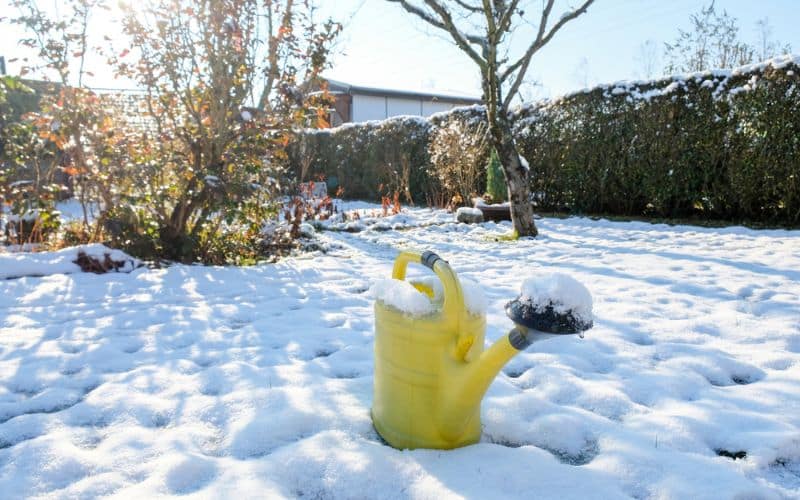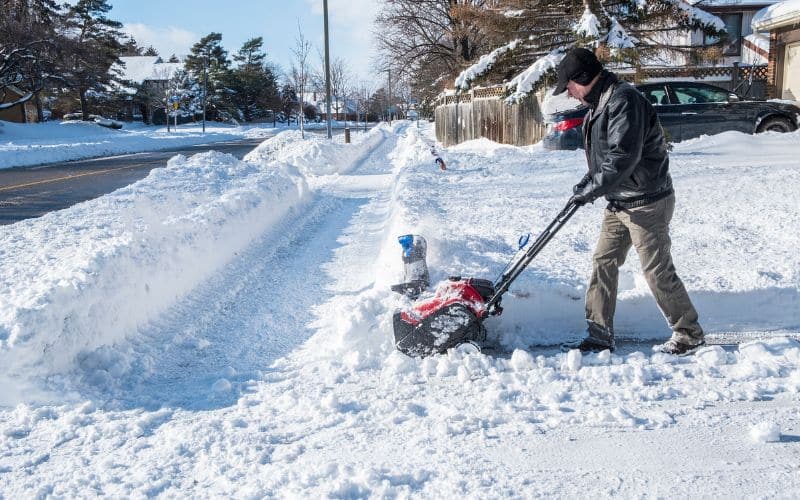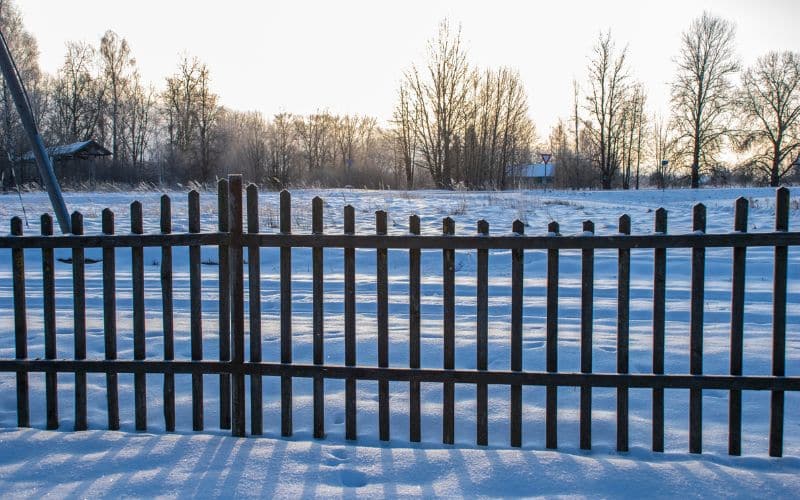
Struggling with a blanket of snow in your garden? You’re not alone. As picturesque as it may seem, excess snow can be a hassle, affecting your plants and garden layout. But before you start shovelling, it’s important to understand the environmental impact of removing snow too quickly.
In this article, you’ll learn why the snow you’re tossing aside is more than just a chilly nuisance. It’s a crucial player in your garden’s ecosystem, recharging the soil and conserving water for the warmer months ahead. Stick around to discover effective, eco-friendly methods for managing snow in your garden without harming your green oasis or breaking any local laws.
The Impact of Snow on Gardens
Increased Moisture Levels
When snow blankets your garden, it acts as a slow-releasing source of moisture as it melts. This natural irrigation system is essential for recharging the soil and preparing your garden for the growth spurt that comes with spring. As the snow melts, it penetrates the soil deeply, providing a valuable reservoir of water that can be accessed by plant roots. In many cases, this process reduces the need for supplemental watering, especially in the early stages of warmer weather.
Furthermore, the gradual melting process helps to prevent runoff, allowing the water to be absorbed efficiently by the soil without washing away vital nutrients or causing erosion. The snowmelt also fills groundwater reserves, which can benefit your garden during the dry summer months.
Heavy Weight on Plants
Despite the benefits, snow can be a mixed blessing, particularly when it accumulates to excessive levels. The weight of heavy, wet snow has the potential to damage delicate plants. Branches can snap, and entire plants may become misshapen or even uprooted under the strain. Particularly vulnerable are evergreen shrubs like boxwoods and arborvitaes, which have a structure that easily traps snow, thus increasing the load.
To protect your garden, it’s wise to gently remove snow accumulations on hedges and shrubs using a broom or your hands; avoid tools like shovels which may inadvertently cut or break plant limbs. Start from the bottom and carefully work your way up to prevent adding more weight onto lower branches.
Damage to Structures
Snow isn’t just a concern for plants; garden structures, including greenhouses, pergolas, and trellises, also face risks from heavy snowfall. A thick layer of snow can exert significant pressure on roofs and frames, leading to structural failure if not addressed. It’s crucial to monitor the weight load on these structures during the winter and remove excess snow accumulations promptly.
To mitigate the risk, invest in sturdy, well-anchored construction and sloping roof designs that discourage heavy snow buildup. Regular maintenance, such as fixing cracks and reinforcing joints, will also help your garden structures withstand the rigours of winter weather.

Clearing Snow from Your Garden
Maintaining your garden during the winter requires strategic snow removal. You’ve got to balance the need to clear snow with the sensitivity of your garden’s dormant plants. Here’s a breakdown of effective methods to help you clear snow without causing harm.
Shoveling
When you’re clearing snow with a shovel, be sure to follow these guidelines:
- Start Early: Tackling the snow as soon as it begins to accumulate can prevent excessive build-up, making it easier to remove.
- Be Gentle: Use a lightweight plastic shovel fitted with a nylon cutting edge to avoid damaging the soil or plants underneath.
- Proper Technique: Push the snow more than lift it to avoid back strain. When lifting is necessary, bend your legs and keep your back straight.
- Layered Approach: Remove snow in layers, especially if it’s deep, to reduce the weight and stress on your garden beds.
Using a Snow Blower
A snow blower can be a garden-friendly option if used with care:
- Know Your Equipment: Choose a snow blower that’s easy to handle and maneuver around your garden.
- Maintain Distance: Keep the blower at least a few inches above the ground to avoid sucking up loose debris and rocks that could damage plants.
- Directional Control: Aim the chute away from delicate shrubs and bare soil to prevent injury from high-speed flying snow.
Applying De-icing Agents
De-icing agents can assist in clearing pathways while minimizing garden impact:
- Choose Wisely: Opt for pet-safe and plant-friendly de-icing products that do not contain harmful chemicals like sodium chloride or calcium chloride.
- Spot Application: Apply de-icers judiciously on paths and hard surfaces, steering clear of garden beds to avoid potential root damage.
- Aftercare: Once the ice has melted, dilute the area with water if weather permits to reduce any residual salt build-up in the soil.
Protecting Your Garden from Snow Damage
Mulching
Mulching is a tried-and-tested technique for safeguarding your plants during winter. It acts as insulation for the soil, maintaining more consistent temperatures and protecting the root systems of your plants from freeze-thaw cycles. Furthermore, mulch minimises soil erosion and prevents the growth of weeds which can be advantageous when the snow melts in spring. Here’s how to leverage mulching for snow damage prevention:
- Select an organic mulch like straw, shredded leaves, or wood chips. These materials allow the soil to breathe and provide nutrients as they decompose.
- Apply a thick layer of mulch—about 2 to 3 inches—around your plants before the first frost sets in.
- Ensure you leave a small space around the base of each plant to prevent rot and allow for some air circulation.
When applied correctly, mulch retains moisture in the soil, providing a stable environment that can enhance your plant’s resilience to snow and cold.
Wrapping Plants
To prevent snow damage on delicate shrubs and trees, wrapping your plants is an effective method. This technique supports branches, preventing breakage under the weight of heavy snowfall. Here’s how wrapping benefits your garden plants:
- Stabilizes plant structure by holding branches together.
- Grants extra insulation against cold winds and frost.
- Reduces desiccation and breakage caused by snow.
To wrap plants, use materials like burlap or horticultural fleece. Start from the base and work upwards, securing the material with garden twine. For trees, wrap the trunk to shield it from extreme temperature variances and potential sunscald.
Creating Protective Structures
Snow’s weight can cause structural damage to both perennial plants and garden features. Building supportive frameworks can be critical in areas with heavy snowfall. These protective structures should be:
- Sturdy enough to withstand the weight of accumulated snow.
- Tall enough to shield plants, keeping snow from directly settling on them.
- Built using materials like wood or metal that won’t bend or collapse under pressure.
Examples of such structures include wooden A-frames placed over shrubs or cone-shaped wire cages around young trees. These installations not only prevent deformation and breakage but also help maintain the natural shape of your plants during the dormant period.
By employing these methods, you’re ensuring that your garden is suitably equipped to handle the snow, keeping your green spaces healthy and intact throughout the colder months.
Preventing Snow Build-up in Your Garden
As you maintain your garden throughout the year, you ought to consider strategies to prevent snow build-up during the winter months. Here’s how you can safeguard your plants and structures from the heavy weight and potential damage of snow.
Pruning Trees and Shrubs
Proper pruning is vital for the health of your trees and shrubs and plays a crucial role in preventing damage from snow and ice. Pruned trees have fewer weak branches that could snap under the weight of snowfall. Here are several reasons why pruning is beneficial:
- Promotes Strong Branch Structures: By removing weak or dead limbs, you ensure that the remaining branches are robust enough to bear the weight of snow and ice.
- Improves Plant Health: Removing diseased or pest-infested branches helps prevent the spread to other parts of the plant.
- Enhances Sun Exposure and Air Circulation: This leads to a hardier plant that can better withstand the cold winter conditions.
- Reduces Branch Density: This allows snow to fall through the branches rather than accumulate.
Remember, pruning should be done correctly and at the right time of year to be effective. Late winter is generally the best time for this activity, just before new growth begins.

Installing Snow Fences
Snow fences are structures designed to reduce the speed of wind over a snow surface, thereby causing snow to deposit downwind of the fence. Here’s why you should consider installing them:
- Controls Snow Drifts: Snow fences create drifts in predictable places, making snow removal easier and protecting delicate plants.
- Enhances Safety: By directing snow deposits, you can keep walkways and driveways clearer.
- Economical and Environmentally Friendly: Snow fences are a sustainable option to reduce the reliance on chemical deicers.
When installing a snow fence, consider the following:
- Orientation: Place the fence perpendicular to the prevailing wind direction.
- Location: Install the fence upwind of the area you want to protect, considering the distance based on the height of the fence.
- Material: Use durable materials designed to withstand harsh weather.
By implementing these strategies, you’ll not only protect your garden’s aesthetic appeal but also preserve the structural integrity of your landscaping throughout the winter season.
Conclusion
You’ve got the tools and strategies you need to tackle snow in your garden effectively. By using mulch, wrapping plants, constructing supports, pruning wisely and setting up snow fences, you’re well-equipped to protect your green space from the harsh winter elements. Remember, a little effort now can save you a lot of trouble later and ensure that your garden remains a thriving sanctuary year-round. So don’t let snow dampen your spirits—get out there and safeguard your garden with confidence!
Colin Macmillan is a seasoned entrepreneur and the CEO of Riverwood Landscape, a leading landscaping company based in Canada. He has been at the helm of the company since leaving high school, demonstrating his strong leadership skills and business acumen.
Colin’s expertise lies in various aspects of landscaping, including lawn care, interlocking, sod installation, and commercial maintenance. His hands-on approach and dedication to the craft have been instrumental in building Riverwood Landscape into a reputable brand.
One of his most notable achievements is the creation of a successful landscape franchise that services multiple locations. This accomplishment underscores his strategic thinking and ability to scale operations effectively.
Colin has also had the privilege of working with Guelph Hospital for landscaping and maintenance, a testament to the trust and reliability that his company has earned over the years.
His professional mission is to offer the best services and experiences for customers, a goal that he tirelessly pursues. Colin’s commitment to excellence and customer satisfaction continues to drive the growth and success of Riverwood Landscape.









